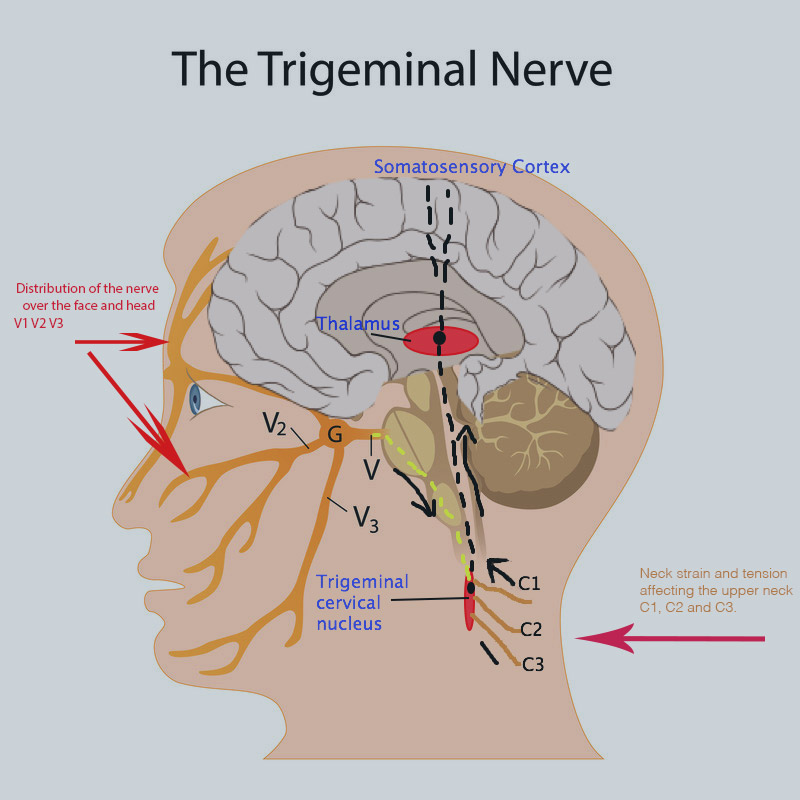Craniofacial Pain Syndrome
Craniofacial Pain Syndrome
There are a growing number of patients with long-term head, neck and facial chronic pain problems that are often difficult to treat. More often the diagnosis of neck-related headaches are being questioned by the medical community. Having treated many of these patients, I am fully aware of this problem so I have devised an integrated approach to manual therapy, Osteopathy and Acupuncture to help make a positive difference to these patients and improve their quality of life.
Anatomical basis for neck related headaches
An irritating stimulus from the upper neck region caused by, inflammatory irritation to nerve connective tissue, and muscles that are tense and weak, may cause pain to be projected into the areas of the forehead supplied by the Trigeminal nerve. The diagram shows the plan of the Trigeminal nerve and its position in the head and the neck.

Posture
There are many theories as to why people develop poor posture. These include genetic factors, sustained postures relating to occupation, lifestyle or emotions may contribute to long-term negative changes in posture. The current thinking suggests forward head posture is associated with weak neck muscles. Additionally, forward head posture is a factor in developing jaw joint problems e.g. TMJ dysfunction.
The diagram shows A – correct head posture and B – poor head posture also known as forward head posture.
In diagram A, correct head posture puts the muscles of the neck under less strain and therefore less chance of fatigue. In diagram B, poor head posture or forward head posture puts the muscles of the neck under more stretch and load, therefore more prone to fatigue and weakness.

Changes to neck posture will alter the position of your jaw and jaw joint, known as TMJ. Forward head posture in relation to your upper back posture increases the tension of the muscles and soft tissues that attach to the jaw bone in the front of your neck/throat. Tension of these tissues causes the jaw bone to move downwards and backwards, placing increased tension in the TMJ. This alters how the TMJ moves when talking or eating. The added tension on the TMJ can affect the muscles used for chewing, altering the length of the muscles in the neck and also the resting position your tongue.
When sitting or standing the jaw bone should be able to find a comfortable resting position that is unique to every individual. Your posture will alter the soft tissue and muscular structures of the upper back, neck and throat. Failure to reach a resting position will place considerable tension within the muscles and soft tissue. This is thought to have a major effect on craniofacial pain and dysfunction.

